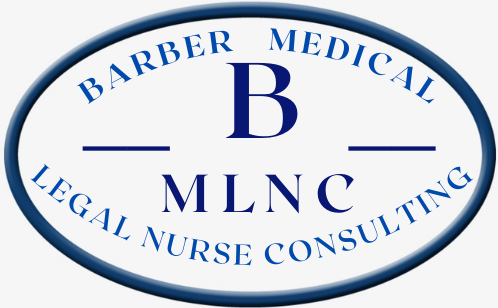OBSTETRICAL TRIAGE AS A COMMON AREA OF LIABILITY
In this blog I’ll review the objective of the Emergency Medical Treatment and Active Labor Act (EMTALA), obstetrical standards of care, consequences of EMTALA violations, common obstetrical allegations and offer a case scenario for reflection.
Emergency Medical Treatment and Active Labor Act (EMTALA): The Federal EMTALA Act was created as anti-discriminatory legislation to protect people who could not afford emergency care services. The over-arching purpose of EMTALA is to ensure access to health care.
Obstetrical Standards, Guidelines and Recommendations: EMTALA requires participating hospitals (hospitals participating in the Medicare program) to have policies and procedures that ensure that:
- Healthcare providers offering obstetrical triage:
- Perform a medical screening examination (MSE) to determine whether an emergency medical condition exists (including a maternal and fetal evaluation)
- Provide necessary stabilization treatment when an emergency medical condition exists
- Stabilize the pregnant patient, or if the healthcare provider certifies that the benefits of transfer outweigh the risks, arrange for proper transfer to another hospital.
- Pregnant women may come to the hospital’s labor and delivery unit not only for obstetrical care but also for evaluation and treatment of non-obstetrical illness. A pregnant woman who presents for care should be evaluated in a timely fashion. Minimally, evaluation by an obstetrical nurse should include assessment of maternal vital signs, fetal heart rate, and uterine contractions. Further evaluation includes assessment for vaginal bleeding, acute abdominal pain, temperature of 100.4 degrees Fahrenheit or higher, preterm labor, preterm premature rupture of membranes, hypertension and indeterminate or abnormal fetal heart rate patterns. If these findings are present or suspected, the responsible obstetrical care provider should be promptly informed.
- The initial triage process requires one nurse to one woman presenting for care. This ratio may change to one nurse to two, or three women as maternal fetal status is determined to be stable, until patient disposition.
- Any patient who is suspected to be in labor or who has ruptured membranes, or vaginal bleeding should be evaluated promptly. Minimally, the following should be assessed: maternal vital signs, frequency and duration of contractions, documentation of fetal well-being, urinary protein concentration, cervical dilation and effacement (unless contraindicated such as with placenta previa or preterm premature rupture of membranes), cervical length, fetal presentation and station of presenting part, status of membranes, estimated fetal weight, and assessment of maternal pelvis. In addition to these assessments, date and time of the patient’s arrival and notification of the obstetrical provider should be included in the medical record.
- If the woman has received prenatal care and a recent examination has confirmed the normal progress of pregnancy, triage evaluation may be limited to an interval history and physical examination directed at the presenting condition.
Consequences of EMTALA Violations:
- Hospital fines up to $250,000 per violation
- Physician fines up to $50,000 per violation
- Hospital termination from its Medicare provider agreement
- Physician exclusion from Medicare and Medicaid programs
- A patient who suffers personal injury from a violation may sue the hospital for damages in civil court
- A receiving facility, having suffered financial loss as a result of another hospital’s violation of EMTALA, can bring suit to recover damages
Common Obstetrical Triage Allegations:
- Failure to perform a medical screening examination
- Failure to include a timely assessment of fetal status as part of the maternal medical screening examination
- Delay in performing a medical screening examination (E.g., having a pregnant woman wait in the waiting room prior to maternal-fetal status being evaluated)
- Failure to have a policy in place delineating conditions that require bedside evaluations by a physician or midwife prior to discharge after MSE by labor and delivery RN
- Failure of provider to complete bedside evaluation for pregnant woman who presents with high-risk medical or obstetrical condition
- Discharge of a pregnant woman who is unstable for discharge (E.g., pregnant woman with elevated blood pressures and complaints of unresolved headache.)
- Discharge of a pregnant woman without establishing fetal well-being (E.g., completion of a non-stress test at or greater than 28weeks gestation)
- Failure to meet all aspects of the EMTALA regulations in assessing, treating, and discharging a pregnant woman who presents for care
Case Scenario:
The patient is a 33-week pregnant woman, presented to Hospital “A” complaining of leaking fluids, pelvic pain and vomiting. An ED nurse told the patient that the hospital did not have an obstetrician on site and that the patient could either start treatment at Hospital “A” and be transferred later, or that her support person could drive her immediately to Hospital “B” where her obstetrician practiced.
After being told this, the patient left Hospital “A” by private vehicle to Hospital “B,” a thirty-minute drive. Hospital “A” never provided the patient or her unborn child a MSE and failed to transfer this patient who had an emergency medical condition. At Hospital “B,” the patient underwent an emergency cesarean delivery and delivered a male infant without a heartbeat. The receiving hospital’s efforts to revive the infant were unsuccessful.
The hospital entered into a $50,000 settlement agreement with the Office of Inspector General regarding allegations that it failed to provide an adequate MSE and transfer for a patient.
References
Moffat J.C. (2021), The EMTALA Answer Book, 1st edition.
Simpson K.R., Creehan P.A., (2008). Perinatal Nursing, 4th edition.
Simpson K.R. et al., (2021). Perinatal Nursing, 5th edition.
P.S. Comment and Share: What is your experience with developing EMTALA policies, or auditing compliance? Do you have an EMTALA violation case to share?



































